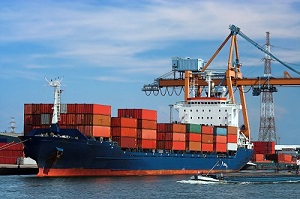
SOLAS changes: 10 key questions
Beginning July 1, 2016, all shipping containers require a Verified Gross Mass (VGM) certificate before being loaded onto a ship. Containers without a VGM are likely to experience delays and incur additional handling costs.

With this new legislation now in force, does your company understand the ins and outs of the new regulations?
We asked Avery Weigh-Tronix’s divisional manager for logistics and SOLAS expert Stewart Campbell 10 key questions about the changes.
1. Why should I weigh my container?
Estimating weights is not permitted under the new SOLAS VGM regulation and all containers must have a compliant VGM that is generated by using one of the two weighing methods set out in the regulations.
Regardless of this new legislation, all containers should be properly weighed to ensure that they are of a safe mass and the weight of the contents is evenly distributed. This common sense approach applies whether a container is travelling via sea, road or rail. Overloaded orimproperly balanced containers have contributed to serious maritime disasters, road accidents and rail derailments which is why the SOLAS treaty has been updated to ensure optimum safety of container handling at sea and on land.
2. What happens if my container gets to port without a VGM?
It will not be loaded onto the ship until a VGM has been provided. This could cause delays and incur additional costs while your container is unloaded for weighing – or even taken off port if there are no appropriate weighing facilities available.
3. How do I make sure the VGM reaches the port with my container?
The VGM declaration must be included on your shipping documentation either by you or a third party that has been contracted by you. The VGM declaration must include the date, time, place and method of obtaining the VGM and be signed by a duly authorised person. It must also include references for the receiver to assign the VGM to shipping transactions (for instance, the container ID number). If you decide to contract with a third party to provide the VGM, you are still responsible for its accuracy and ensuring that the shipping line receives it by their stated deadline in order to create a safe stowage plan.
4. Do I need my own weighing solution or can I just weigh at the port?
Some ports are offering container weighing services for which they may or may not charge a fee. However, obtaining a VGM when the container has already arrived at port does have its risks. If your container is over its maximum weight capacity, it cannot be loaded. This will result in large costs and potential delays. Also, container weighing is an additional process for busy and congested ports, so there is potential for delays and added costs in waiting to get containers weighed.
The ideal solution to avoid the delays and added costs is to obtain a VGM before the container leaves your site. This puts you in control and gives you the confidence that you’re providing the right certification.
5. What is the best weighing solution to ensure SOLAS compliance?
The best weighing method, equipment and processes for you will depend on your individual business. Talk to one of our experts, who will work with you to find the right solution for your business needs.
Many different weighing solutions could be suitable, including portable container weighing systems, forklift trucks, platform scales, or weighbridges. These comply with the SOLAS definition of “lifting equipment or any other device which is capable of determining the actual gross mass of a packed container or of packages and cargo items, pallets, dunnage and other packing and securing material”.
Just as important as selecting the right weighing equipment is putting processes into place for maintaining and calibrating the equipment, so that it meets legal requirements on a long-term basis.
6. How do I know that the equipment that I’m investing in meets all of the legal requirements?
Look for equipment that is either certified for trade use in your country, or has OIML approval. This certification gives users the reassurance that the weighing equipment they are using has been independently verified and tested.
7. Do I need to purchase new equipment or is it available to rent?
Weighing equipment that is suitable for SOLAS application is available for both purchase and rental. Whether to purchase or rent will be a decision based on how often you are weighing containers or whether you prefer CAPEX or OPEX expenditure.
8. What’s the difference between method 1 and method 2 container weighing?
Method 1 is achieved by weighing a packed container using calibrated and certified equipment. Method 2 is achieved by weighing all packages and cargo items, including packing materials and the tare weight of the container, then adding the sum of all weights together to provide a verified weight.
9. What is the cut-off time for submitting a VGM?
That is established by the servicing terminal as well as the ship’s master. The VGM needs to be received far enough in advance so it can be included in the ship’s stowage plan.
10. Is July 1 a strict deadline – or will the International Marine Organization show some lenience?
It is a strict deadline: from the July 1, shippers are responsible for providing a compliant VGM and the ship’s captain will be responsible for preventing the loading of containers without a VGM.
Find out more about what SOLAS means for your business by taking our short survey.

 United States
United States  Canada
Canada  Canada (fr)
Canada (fr)  India
India  Malaysia
Malaysia  Ireland
Ireland